100 years ago some American troops were still occupying Germany after the November 1918 armistice that ended most of the fighting in World War I, but many were returning home. According to the “Rotogravure Picture Section” of the February 23, 1919 issue of The New York Times the first American veterans to parade in New York City were members of the 369th Infantry, a black regiment. Similar to the American Civil War the African-American troops were led by white upper-level officers. The unit was originally 15th New York National Guard Regiment. The regiment’s marching jazz band led the procession. While it was over there the band played for wounded American soldiers in France and Belgium and entertained many others.
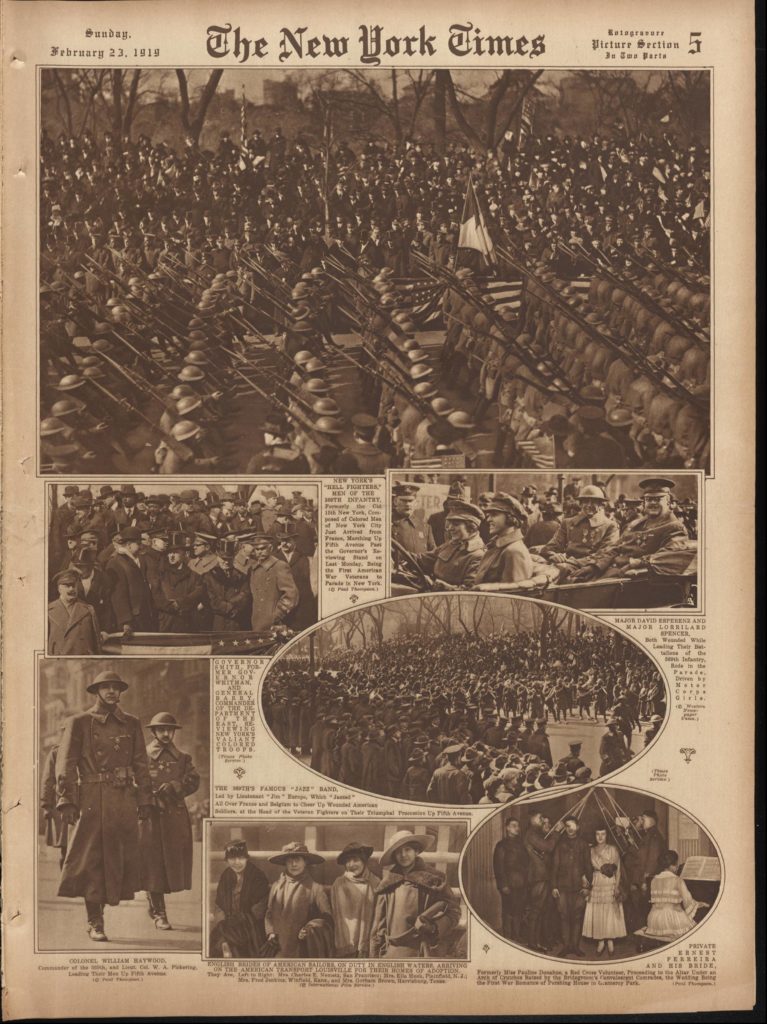
“Hell Fighters” on Fifth Avenue
A week earlier the New York Tribune pictured three returning black officers, including Otis Beverly Duncan, “the highest-ranking African American in the American Expeditionary Forces at the end of World War I, serving as a lieutenant colonel in the 370th Infantry Regiment.” The 370th Infantry was originally the 8th Illinois National Guard.
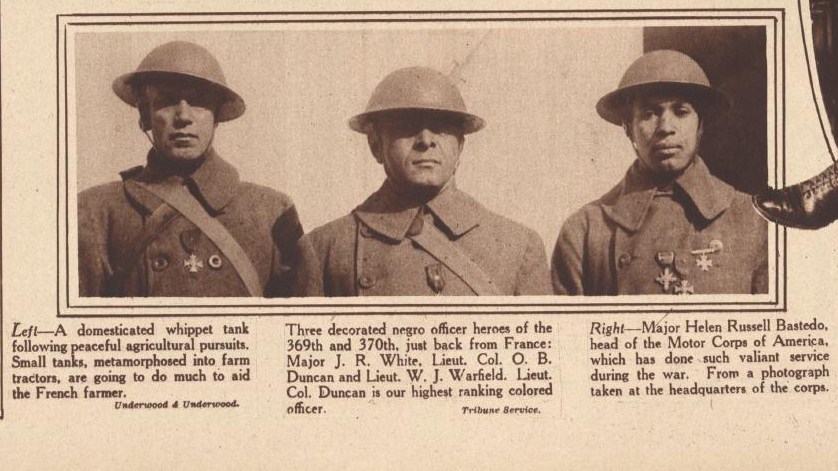
“Three decorated negro officer heroes”
![[Unidentified African American recruits for the 15th New York National Guard Regiment heading to Camp Upton, New York] (between 1917 and 1918; LOC: https://www.loc.gov/item/2017648706/)](https://www.bluegrayreview.com/wp-content/uploads/2019/02/51932v-150x150.jpg)
recruits for the 15th New York National Guard (later the 369th)
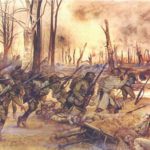
Harlem Hell-fighters (369th) during the Meuse-Argonne Offensive
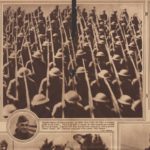
“entire regiment was awarded the Croix de Guerre” Trib February 23rd
____________________________________
The 369th band’s leader was James Reese Europe, who “was the leading figure on the Black American music scene of New York City in the 1910s. Eubie Blake called him the ‘Martin Luther King of music.'” Mr. Europe died on May 9, 1919 in Boston during a performance. During intermission a disgruntled drummer stabbed him in the neck with a penknife. He bled to death at the hospital. “Europe was granted the first ever public funeral for a black American in the city of New York,” and is buried at Arlington National Cemetery.
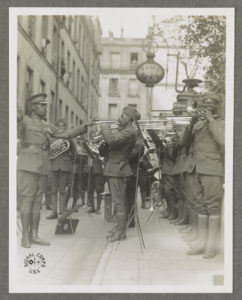
Lt. Europe conducting for the wounded (Americans in Paris)
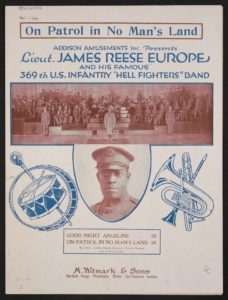
a man and his band (beware a drummer)
There’s a ton of information out there about the 369th and James Reese Europe. According to an eight minute YouTube video James Europe wasn’t over there just for the music:
“On April 20th, 1918 Lieutenant James Reese Europe accompanied a French night patrol across No Man’s Land under heavy enemy fire and became the first African-American officer to face combat during the war.”
And at the time of his death he wasn’t in Boston just for a show:
“On the morning of May 9th, 1919 Europe was in Boston scheduled to lay a wreath at the base of the memorial to the 54th Massachusetts Volunteers, the first black regiment to fight in the Civil War.”
The video begins with words by Gerald Early:
“Jazz seemed to so much capture the absurdity of the modern world because of course the modern world had become absolutely absurd because of World War I.”
I went back to the Wikipedia well once again and learned something about the history of Black History Month in the United States:
“The precursor to Black History Month was created in 1926 in the United States, when historian Carter G. Woodson and the Association for the Study of Negro Life and History announced the second week of February to be “Negro History Week”. This week was chosen because it coincided with the birthday of Abraham Lincoln on February 12 and of Frederick Douglass on February 14, both of which dates black communities had celebrated together since the late 19th century.”
The Great Emancipator was born 210 years ago today.
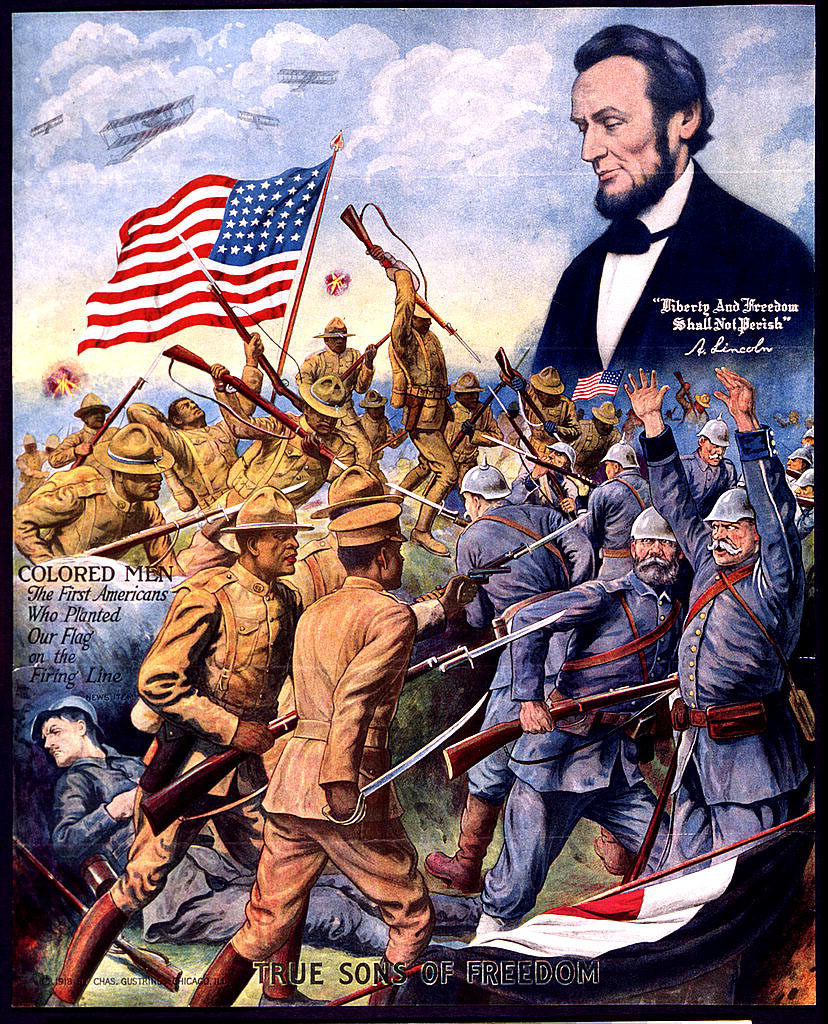
freedom fighters
From Wikipedia(media): Meuse-Argonne Offensive; with Lincoln. From the Library of Congress (besides the newspaper clippings): recruits; entertaining American wounded “with real American jazz”; sheet music



![[Unidentified African American recruits for the 15th New York National Guard Regiment heading to Camp Upton, New York] (between 1917 and 1918; LOC: https://www.loc.gov/item/2017648706/)](https://www.bluegrayreview.com/wp-content/uploads/2019/02/51932v-150x150.jpg)




